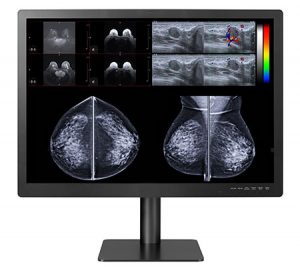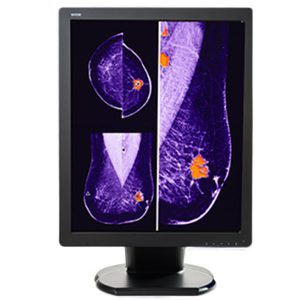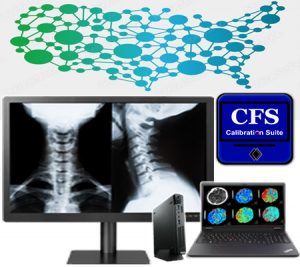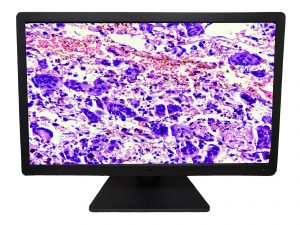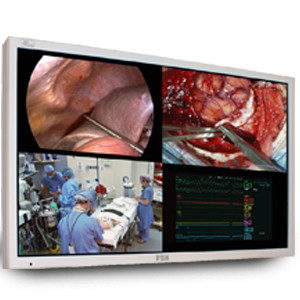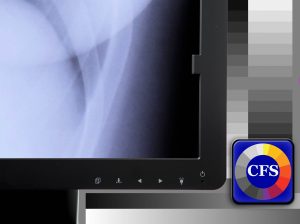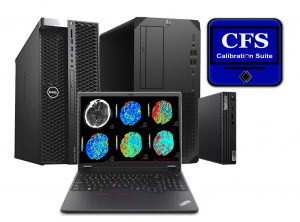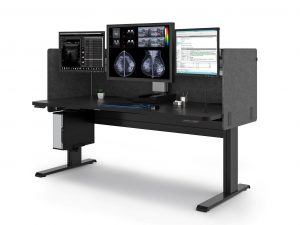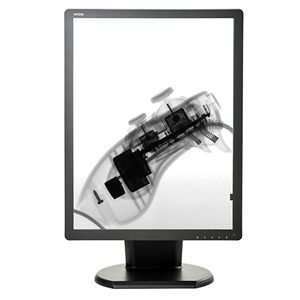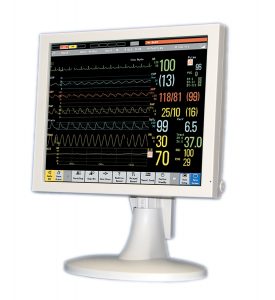The Future of Medical Imaging Technology
 Radiology professionals today can do more than just look at X-Rays. They have a window into the human body with technologies like magnetic resonance imaging, positron emission tomography, and computed tomography, among many modalities. The technology that drives accurate and consistent medical imaging has grown and improved steadily, making it easier for radiology professionals to identify the correct diagnoses. Research dollars have been poured into methods for non-invasive, early discovery of a host of diseases, including cancer, stroke, and cardiovascular system conditions like artery blockages.
Radiology professionals today can do more than just look at X-Rays. They have a window into the human body with technologies like magnetic resonance imaging, positron emission tomography, and computed tomography, among many modalities. The technology that drives accurate and consistent medical imaging has grown and improved steadily, making it easier for radiology professionals to identify the correct diagnoses. Research dollars have been poured into methods for non-invasive, early discovery of a host of diseases, including cancer, stroke, and cardiovascular system conditions like artery blockages.
As a result, the future of medical imaging technology looks bright. Five future trends in medical imaging are likely to evolve and improve through the 2020s, ensuring that radiologists can continue to make accurate and efficient diagnoses that enable medical care providers and patients to choose the most effective treatment options. Learn more about these future trends in medical imaging.
- 1. Virtual Reality and 3D Imaging
Virtual reality is useful for more than just video games. In the world of radiology, three-dimensional imaging takes technologies like MRIs and CT scans a step further, permitting doctors to look at a full, realistic view of a body part.
Using the current scans and a process called cinematic rendering, special augmented reality software creates a realistic picture that can be viewed in detail from every angle. The resulting image has texture, which enables radiologists to better examine, for example, tumors or arteries. This opens up additional information that can aid a diagnosis and suggest the best path forward for treatment.
In the future of medical imaging, medical technicians using special imaging eyewear could interact with the 3D scans to gain even more crucial information about an organ, a tumor, or a part of the body. It may be possible to print a copy of the body part using a special 3D printer for even more thorough examination.
Together, virtual reality and 3D imaging give doctors an extremely realistic view of a medical issue. The resulting image requires less guesswork for an accurate diagnosis.
- 2. Artificial Intelligence
Many companies in the medical realm are looking to artificial intelligence to solve a range of problems and improve patient outcomes, but medical imaging is one area where the technology is already making a difference. Software is used to analyze large amounts of data and create algorithms based on that analysis.
When applied to a new patient’s information, the AI can accurately “predict” issues and indicate what problems may exist, allowing radiologists to focus on specific areas for further human analysis. AI technology can also be used to identify possible issues that are not yet visible to the human eye. This saves time and leads to more accurate diagnoses.
One example: ProFound AI, which uses a specific algorithm in tomosynthesis to detect abnormalities in breast tissue. Their tool reduces radiologists’ reading time by 52.7%, improves cancer detection rates by 8%, and reduces false positives by almost 7%. AI is also being used to segment sections of the heart on MRI and detect problems, as well as to identify abnormalities in the retina of the eye earlier than would be possible with current testing.
The use of AI in current medical imaging technology is so effective that its use and the development of additional tools that will use it to assist radiologists are expected to grow dramatically into the next decade. According to Data Bridge Market Research, the compound annual growth rate of AI-based technology in medical imaging is likely to rise by 36.89% by 2026 — that’s a value of nearly $265 billion.
- 3. Nuclear Imaging
Medical professionals use nuclear imaging to quickly identify internal problems based on where radioactive materials concentrate in the body. Typically, in tests like positron emission tomography (PET) or single-photon emission computed tomography (SPECT), the patient ingests a small amount of a radioactive tracer that collects in organs to highlight potential issues.
For example, current nuclear imaging is being used to detect amyloid plaques that collect in the brains of Alzheimer’s patients. Traditionally, these plaques could only be positively identified during an autopsy, so this technology could now indicate patients at risk of Alzheimer’s before the disease worsens. The ability to detect these plaques early could lead to increased treatment options during the early stages of the disease. Other equipment used with radiotracers can show abnormalities in the thyroid, bladder or heart, among other body parts, and can detect cancer or confirm an existing diagnosis.
- 4. Intraoperative Imaging
During surgery, doctors can employ imaging technology to guide their work. Intraoperative imaging, or mobile imaging, can help surgeons distinguish between normal and abnormal tissues, such as in tumor removal, or can help them make necessary cuts and dissections during minimally invasive operations. Techniques in intraoperative imaging can also help doctors perform biopsies or carefully control the insertion of catheters.
In the past, real-time imaging couldn’t be easily used in the surgical suite — or had to be severely limited — because the small doses of radiation needed for the scans could impact the health of the attending health care professionals. Today’s portable technology like the mobile computed tomography (CT) scanner delivers better quality without the higher radiation exposure to either the medical team or the patient. The CT scanner can also be used to check the outcome immediately after the surgery is complete and ensure that there is no internal bleeding or other problems. Other modalities are also being modified for real-time use during surgery.
- 5. Wearable Technology
Extremely portable medical technology can be used to observe or collect data on patients outside of a clinical setting. That means that doctors can better understand how a patient is managing his or her health at home or work and what behaviors or risks could be influencing care. Devices that use mobile imaging, like portable brain scanners for patients with epilepsy, or a glove with MRI technology to assess use of tendons and joints in the hand, are a growing trend in the health care industry. The use of wearable and inexpensive, portable technology can also make it easier for medical professionals to diagnose a problem in any medical setting, including a simple office, and make immediate adjustments to care or medications. Serious issues could be identified more easily, and the patient could be referred for additional care as needed.
The Future of Medical Imaging – What Comes Next
Current medical imaging has come a long way from the days of fuzzy monochrome X-Rays, but should we expect to see continued improvements in the ways we examine and treat patients? As future trends in medical imaging point to ever improving techniques and tools, it will be easier than ever for radiologists to make the right diagnosis more efficiently.
Looking ahead to the future of medical imaging technology can help professionals in the industry understand how they can prepare for these trends to become mainstream. The use of high-resolution, medical-grade displays is key to viewing digital results from multiple types of tests and scans, as well as real-time use in surgery and other patient diagnoses.
Double Black Imaging is constantly innovating and working to ensure our monitors can take advantage of new technologies while providing the best imaging available in the present. The right high-contrast monitors can help radiologists save time and produce more accurate diagnoses, as well as assist surgeons using displays in the operating room. Our quality, paired with our top-notch customer service and support, makes Double Black Imaging displays the best choice for nearly all medical applications. Learn more about our full product line or contact us today for more information.
References
future-trends-in-medical-imaging-2019
2-key-trends-future-medical-imaging-ai-blockchain
how-3d-technology-transforming-medical-imaging-perfcon
29916118
what-is-intraoperative-imaging
